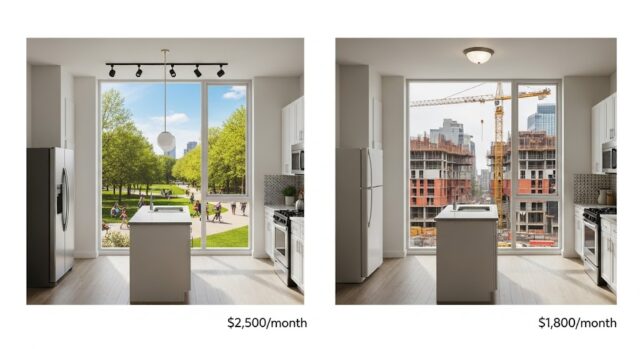In this article we look at Booking Lead Time, and why it is such an important metric in applying Dynamic Pricing and revenue management for the hotel/accommodation, car rental, entertainment, travel, transport and hiring industries.
The terminology we use in this article is specific to the hotel and accommodation industry. For example, we refer to “check in date”, “occupancy” and “rooms available”. Nonetheless, the concepts in the article are equally applicable to other industries, each of which has its own terminology. We have used terminology from the hotel industry because it is well understood.
What is Booking Lead time?
Booking Lead time is the number of days between when a booking is made, and when the customer will be checking in.
For example, if a customer goes onto Expedia on the 10th of January, and books a room for the 30th of January, the booking lead time is 20 days.
How do you estimate your booking lead time?
You can estimate booking lead time based on what has happened in the past. For example, you might find that historically, bookings were made as follows:
• 10% – on the check in date (also known as arrival date)
• 20% – 1 day before the check in date
• 30% – 2 days before the check in date
• 20% – 3 days before the check in date
• 10% – 4 days before the check in date
• 10% – 5 days before the check in date
What is a Booking Lead Time chart?
A booking Lead Time chart shows the proportion of bookings that are made at various durations in advance of using the service. For example, for the booking lead times described above, i.e.
• 10% – on the check in date
• 20% – 1 day before the check in date
• 30% – 2 days before the check in date
• 20% – 3 days before the check in date
• 10% – 4 days before the check in date
• 10% – 5 days before the check in date
the booking lead time chart would look like this:

The chart allows you to quickly see what proportion of booking activity you expect on a certain day.
We can also create a cumulative booking lead time chart. The chart below is equivalent to the one above, however it shows cumulative bookings. For example, it shows that at the end of the day prior to check in, you would expect to have received 90% of booking activity.

Why is Booking Lead Time important?
Booking Lead is an important factor in calculating your likely occupancy rate (the proportion of rooms that get booked).
The cumulative lead time chart above shows that with 3 days of bookings remaining (lead times of 0, 1 and 2 days), you would expect to have received 40% of booking activity. If you have capacity of 100, that translates to 40 expected bookings if you are on track to book out. Now suppose you have only received 20 bookings. This is an indication that you will not book out. You can use this information for these purposes:
• Marketing – You might want to run some promotions and/or increase your marketing activity to increase demand.
• Operations – You could reduce the number of staff rostered in anticipation of not being fully booked
• Pricing – If you use Dynamic Pricing, you may want to reduce your prices to encourage more users. Note that just because you won’t book out it doesn’t necessarily mean that you should reduce prices. It is just one of many considerations – you should also consider, for example, the prices your competitors are charging and the elasticity (relationship) between price and demand.
Now, let’s look at a different scenario: You have received 70 bookings and you are on track to book out early. You might decide to make these changes:
• Marketing – reduce marketing spend. There is no point spending money on marketing when you are going to book out anyway
• Operations – Increase the number of staff rostered, you are expecting a busy day!
• Pricing – It is clearly time to increase your prices, so you can maximise revenue from the remaining 30 spaces available. At this point, you should be regretting that you hadn’t implemented Dynamic Pricing sooner, because if you had done so, you would already have increased prices and you would have more money in the bank! Keep in mind, the objective on busy days is to book out on the check-in-date itself.
You can only make these adjustments to marketing, operations and pricing if you have a good understanding of your booking lead time. What’s more, if you don’t estimate your booking lead time correctly then you might get these marketing, operations and pricing decisions wrong. That’s why having good data, and the ability analyse that data, is so important. Understanding your booking lead time, and the ability to quickly adjust marketing, operations and pricing, can be the difference between a successful and unsuccessful business.
Does the Booking Lead Time curve change over time?
Yes!
Typically, in busy periods, people tend to book earlier because they know that they will miss out of they leave it until the last minute. Hotels might find that usually guests book 30 days ahead on average, whereas for the Xmas holiday period, guests book 120 days ahead on average. Therefore, you need to calculate different Booking Lead Time proportions for different check in days.
The same applies in other industries too. Tickets for an Ed Sheeran concert or the Champions League Final will book out faster than tickets to a local band or local sporting event. Bookings for restaurants are made weeks/months in advance for New Year’s Eve or Melbourne Cup day, and only a few days in advance for most other days.
What else affects the Booking Lead Time?
Another important factor are your customer segments. For example, a hotel might segment its customers by Business v Leisure, and Overseas v Domestic. Typically, leisure travellers book earlier than business travellers, and overseas bookings are made earlier than domestic bookings.
Your cancellation policy can also affect lead times. If you offer free cancellations, your customers are likely to book further in advance (all else being equal), knowing they can cancel at any time.
If you need any help analysing your Booking Lead Time, and using it to make better decisions, then please feel free to get in touch!




